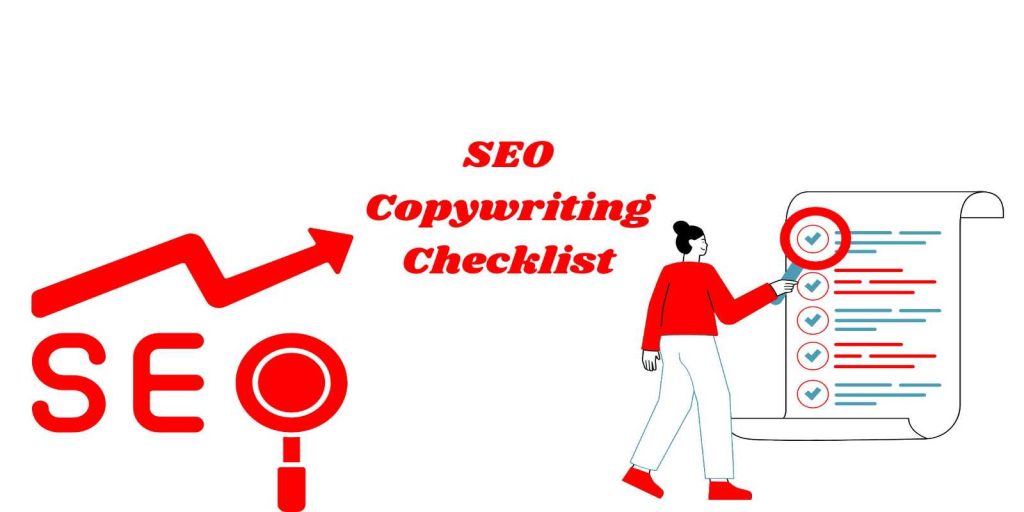SEO copywriting is more than just adding keywords to content. It’s about understanding search engine algorithms, addressing user intent, and delivering value through optimized content. This blog will guide you through a 20+ step checklist that ensures your content is engaging, optimized, and ready to rank higher.
The 20+ Step SEO Copywriting Checklist
1. Add the Primary Keyword to Your URL
- Include the primary keyword in your URL for better search engine visibility.
- Keep URLs short and memorable.
2. Keep Your URL Short and Concise
- Use URLs under 60 characters for readability and optimization.
- Avoid unnecessary words or descriptors.
3. Put the Keyword at the Front of the Title Tag
- Place the keyword at the beginning of the title tag for better ranking.
- Example: “SEO Copywriting Checklist: 21 Tips to Rank Higher.”
4. Include the Keyword in the Meta Description
- Add the keyword naturally in your meta description.
- Write compelling descriptions that align with user intent.
5. Add Keyword Synonyms to Meta
- Use keyword variations or related phrases to avoid over-optimization.
- Example: Replace “SEO tips” with “strategies for better SEO.”
6. Use the Keyword in the First Sentence
- Introduce the keyword naturally in the first sentence of your content.
- Hook the reader with an engaging opening.
7. Put Keywords in H1s, H2s, H3s
- Include keywords in your headings to improve relevance.
- Use variations of the primary keyword for better semantic optimization.
8. Optimize Images with Alt Tags
- Add alt text to all images with relevant keywords.
- Improve image accessibility and rankings in Google Image Search.
9. Include Keyword Cluster Terms
- Use related terms and synonyms throughout your content.
- Example: “on-page SEO,” “meta tags optimization.”
10. Add 5+ External Links
- Link to credible external sources to boost authority.
- Example: “Refer to tools like Ahrefs for keyword research.”
11. Internal Link to 5+ Pages
- Link to at least five pages within your website to improve navigation and user retention.
- Keep readers engaged by suggesting related topics.
12. Make Your Text Readable on Mobile
- Ensure your content is mobile-friendly with responsive design.
- Use short paragraphs and larger fonts for better readability on small screens.
13. Test and Improve Website Speed
- Use tools like PageSpeed Insights to test loading speed.
- Optimize images and enable caching to improve performance.
14. Avoid Keyword Stuffing
- Use keywords naturally and avoid overloading them in your content.
- Focus on readability and relevance to avoid penalties from search engines.
15. Hit Search Intent
- Align your content with what the user is searching for, whether it’s educational, transactional, or informational.
- Example: For “SEO tips,” include actionable strategies to help users.
16. Nail the Hook
- Start your content with a bold statement, a surprising statistic, or a compelling story.
- This captures the reader’s attention immediately.
17. Use Bullet Points and Numbered Lists
- Break up text with bullet points or numbered lists to improve readability.
- Example: Use bullet points for step-by-step instructions.
18. Eliminate Large Paragraphs
- Keep paragraphs to 3-4 sentences to avoid overwhelming readers.
- Shorter sections improve engagement and reduce bounce rates.
19. Add Relevant CTA Offers
- Include a call-to-action (CTA) to encourage downloads, sign-ups, or purchases.
- Example: “Download our free SEO guide for expert tips.”
20. Include Stories and Real Experiences
- Add real-life examples or case studies to make your content relatable.
- This builds trust and provides additional value to readers.
21. Ask: ‘How Could It Be Better?’
- Continuously review your content and refine sections that could be improved.
- Update content regularly with fresh data or insights to remain competitive.
Complete Checklist Table
| Step | Action | Reason |
|---|---|---|
| 1 | Add primary keyword to URL | Boost search engine visibility. |
| 2 | Shorten URL | Improves readability and SEO. |
| 3 | Keyword in title tag | Enhances ranking potential. |
| 4 | Keyword in meta description | Increases click-through rate. |
| 5 | Use keyword synonyms | Avoids over-optimization. |
| 6 | Add keyword in first sentence | Aligns with user intent. |
| 7 | Keyword in headings | Signals content relevance. |
| 8 | Optimize alt tags | Improves accessibility and image SEO. |
| 9 | Use keyword clusters | Expands search visibility. |
| 10 | Add external links | Enhances credibility. |
| 11 | Add internal links | Boosts site structure and navigation. |
| 12 | Optimize for mobile | Improves user experience. |
| 13 | Improve website speed | Reduces bounce rates. |
| 14 | Avoid keyword stuffing | Improves content quality. |
| 15 | Hit search intent | Satisfies user queries. |
| 16 | Nail the hook | Captures reader attention. |
| 17 | Use bullet points | Enhances readability. |
| 18 | Shorten paragraphs | Improves engagement. |
| 19 | Add CTAs | Encourages conversions. |
| 20 | Include stories | Builds trust with readers. |
| 21 | Review and refine | Maintains competitiveness. |
Also Read: SEO Strategy for B2B Marketing Teams
Conclusion
SEO copywriting is an evolving process that combines user-focused content with technical optimizations. By following this 20+ step SEO copywriting checklist, you can create content that ranks higher, engages readers, and converts better. Start implementing these tips today to see noticeable improvements in your website’s performance.

